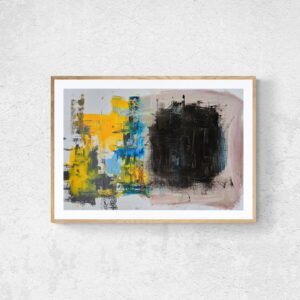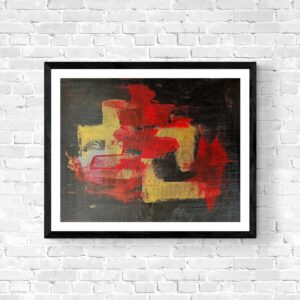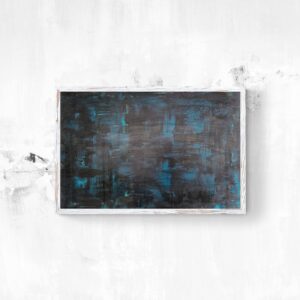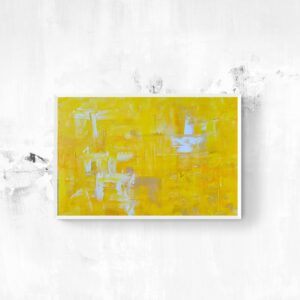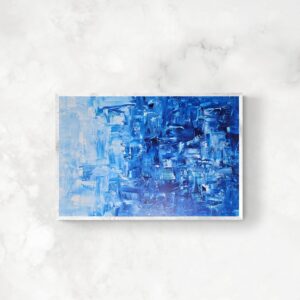

HAMBURG, Germany — “Ok, stop the cameras,” the head conservator commanded from the belly of the storage department. “I want to hear what these instruments sound like without Satch wearing the gloves.” The other assembled staff, seated in a scatter of folding chairs beneath the MARKK ethnographic museum in Hamburg, lowered their phones and tucked them away.
These museum workers had gathered in the MARKK’s basement to oversee and document artist and musician Satch Hoyt “un-mute” the African instrument collection, as he calls it. A masterful player of wind and percussion alike, Hoyt has been working to gain access to African instrument collections in colonial and ethnographic museums so that they may be played again. Within certain African diasporic traditions, some of these instruments are understood as tools to communicate with the creator and ancestors. Thus, this un-muting is not a mere symbolic act protesting the enforced dormancy of museum storage, but an affirmation of fluid continuity between the living and ancestral realms.
Surrounded by masks and statues in the dimly lit storage den, who seemed to be watching, Hoyt dispensed with the white archival gloves he had previously been instructed to wear. He then began, gently, to play a sanza.
“And then,” Hoyt recalls, “It was — Pffuuumm, you could just feel the energy all of a sudden in the room.” Touching the instrument with bare skin invited a rush that the gloves had shielded. “There was a feeling of gratitude,” he said, “of ‘Oh, cool — somebody’s reactivating this instrument.’ Somebody’s actually, finally returning it to its proper use.” Hoyt grinned. “It was like they were going, ‘Yeah, we needed to hear this’” — “they,” in this case, referring not to the MARKK staff watching as he acquainted himself with the museum’s African instruments, but to the audience of masks and statues overhead. “If it happens, you just feel it,” he said, referring to the rush of presence he feels when an instrument has been successfully “un-muted.” As soon as you put your lips on the embouchure, a certain feeling happens….”
Born in London in 1957 to an English mother and a Jamaican father, Hoyt’s early acculturation came at a time when the British Empire was in free fall, as many of its colonies, including Ghana, Nigeria, Kenya, and Uganda, had recently won their independence. Artists, intellectuals, and musicians of the African diaspora converged on the fallen and swinging capital, forging a new era of Pan-African thought. Hoyt’s early mentors were of this milieu, including the Trini filmmaker Horace Ové and the exiled South African jazz trumpeter and flautist Mongezi Feza. In Australia, he was embraced by the First Nations painters Clifford Possum, Turkey Tolson Tjupurrula, and Johnny Warangkula Tjupurrula. Later on in New York, he ran with the pioneering Afrofuturist MC and visual artist Rammellzee, as well as musician Greg Tate and the band Burnt Sugar the Arkestra Chamber. In Paris, he accompanied Louise Bourgeois on recordings of her poetry and composed for Grace Jones. His list of friends and collaborators is long and illustrious, but nowadays, Hoyt is increasingly focused on ancestral ties, and is coordinating recording dates in museum basements instead of commercial studios.
The process of “un-muting” first occurred to Hoyt in 2017 at the Berlin phonographic archive, while he was studying the wax cylinders that archaeologist Leo Frobenius recorded in the Congo a century before. Wax cylinder recordings typically feature a bed of unruly static, through which distant intimations of highs can be heard. The rest — overtones, textural detail, any semblance of bass or mid-range frequencies — is left to the imagination. Unsatisfied with daydreaming, Hoyt decided to cut a new path.
“With the phonographic recordings that Frobenius did, afterwards, he acquired the instruments that people had been playing. So, I thought, ‘Well, we’ve got all of these instruments, which are in these ethnographic museums. I can play them. I’ve collected them over years, and they should be sounded.’”

Back at his studio in the Wedding district of Berlin, away from the roaming eyes of curators who come to view his latest canvases and assemblages, is a tall, multi-tier glass cabinet in which many of Hoyt’s African instruments and ancestral figures live. Here, he pours libations in honor of them at regular intervals, and plays the instruments frequently, often ending improvisatory runs with a bright burst of laughter. Indeed, it was the thought of such instruments languishing in storage, unloved and wrapped in plastic, that led him to stage the first un-muting at the Brucke Museum in Berlin in February of 2022.
Museums tend to misclassify captive instruments as sculpture. In keeping with archival practice, touching them is discouraged, let alone playing them. When asked what the host institutions’ attitude towards un-muting is, Hoyt reprises a familiar script:
“Initially, it’s — you’re not supposed to touch, right? They would like to see it as a research-based practice, where I’m studying these instruments …. But I’m not studying the instruments because I know the instruments. I always have to bend over backwards to show them that I have my own collection and that very often it’s equally as old as the one that they have, and I’m playing these instruments on a daily basis, so what’s all the fuss? They’re very protective, and they always let me know that they’re the rightful custodians of the instruments … and then they’re always surprised when they hear the sounds because they don’t know the sounds.”
With carefully rigged microphones in place, the un-muting doubles as an act of what Hoyt terms “sonic restitution.” If museums oppose the return of material heritage, communities of origin can at the very least be reunited with their intangible heritage: the sounds that are their birthright, the rhythms and codes of praise that sustained their forebears. Un-muting points to the urgent need for rematriation, not only in terms of repairing frayed ancestral ties, but crucially, in maintaining the instruments’ integrity:
“Instruments need to be played. If they’re not, they literally dry up. Every first violinist in a philharmonic or symphonic orchestra is playing a Stradivarius which is on loan. Why aren’t any of these instruments that are in these ethnographic museums on loan? Why aren’t they being played?”

When Hoyt was finally granted access to the British Museum’s African instrument collection in 2023, after three toilsome years of negotiations, he was asked to sign a waiver itemizing a litany of poisons (arsenic, lead, mercury, methyl bromide, ethylene oxide, DDT, etc.) that were pumped into the instruments, agreeing that if he were to fall ill or drop dead upon playing them, the British Museum would not be liable.
Hoyt was undeterred by the contamination endured by these instruments. He knew that museums require incoming relics to be as dead as possible before being assimilated into their holdings to forestall parasitic invasion by termites and the like. That these fumigations might render the instruments unplayable was, at best, an afterthought.
According to Hoyt, in some instances, the stifling force of the museum has yielded a profound paralysis which is hard to shake: “Some instruments, they don’t want to be sounded and they’re not going to be sounded. There are some whistles that I can’t play … and it doesn’t really make any sense to me.” He paused before adding, intriguingly, “Maybe some instruments retain this state of slumber; they don’t want to be awoken. The spirit in the instrument doesn’t want to be awoken. So, I don’t force it, you know.”

Hoyt enumerates the many varieties of stilled voices lurking in colonial museums’ depths:
“There are certain instruments which are not played in public and would only be sounded by an Nganga — a soothsayer, when somebody’s got problems in their relationship, or if they feel that they’re being haunted, or if they feel that an ancestor’s not too happy with what they did. There are categories of instruments which would’ve only been played in the royal court, and then there’s instruments, especially whistles, that were only played on hunting trips into the forest, which were imitating the natural habitat. And of course, there’s drums that would have only been played in communicating with the ancestors.”
Hoyt’s un-muting practice creates a portal through which worlds can be made whole again. He acts as a medium, giving form to the unvoiced. In his dexterous hands, knowledgeable in the traditions from which these instruments come, these briefly bottled ancestral presences reconnect to the cosmologies which ground them, and their place in the universe is restored, if only for a fleeting moment. Indeed, when asked where he finds himself temporally in all of this, he answers:“I just feel that I’m witnessing the eternity of it all.”
Presently, Satch Hoyt is turning his attention towards un-muting key museum collections in the United States and in the Vatican’s vaults. With an estimated 90% of Africa’s material heritage located in institutions and private collections in the West, un-muting all the exiled instruments is an impossibility. Yet Hoyt has put forth a potent model for others to build on — if he can make the muted sing, much that has been thought lost may be reclaimed.
Satch Hoyt’s work is featured in Your Ears Later Will Know to Listen at Nottingham Contemporary in Nottingham, United Kingdom, which continues through September 7. He will perform as part of the Afrosonica – Soundscapes exhibition at MEG – Ethnographic Museum of Geneva in Geneva, Switzerland on September 5. His work will be on view at Karst in Plymouth, United Kingdom in October.

